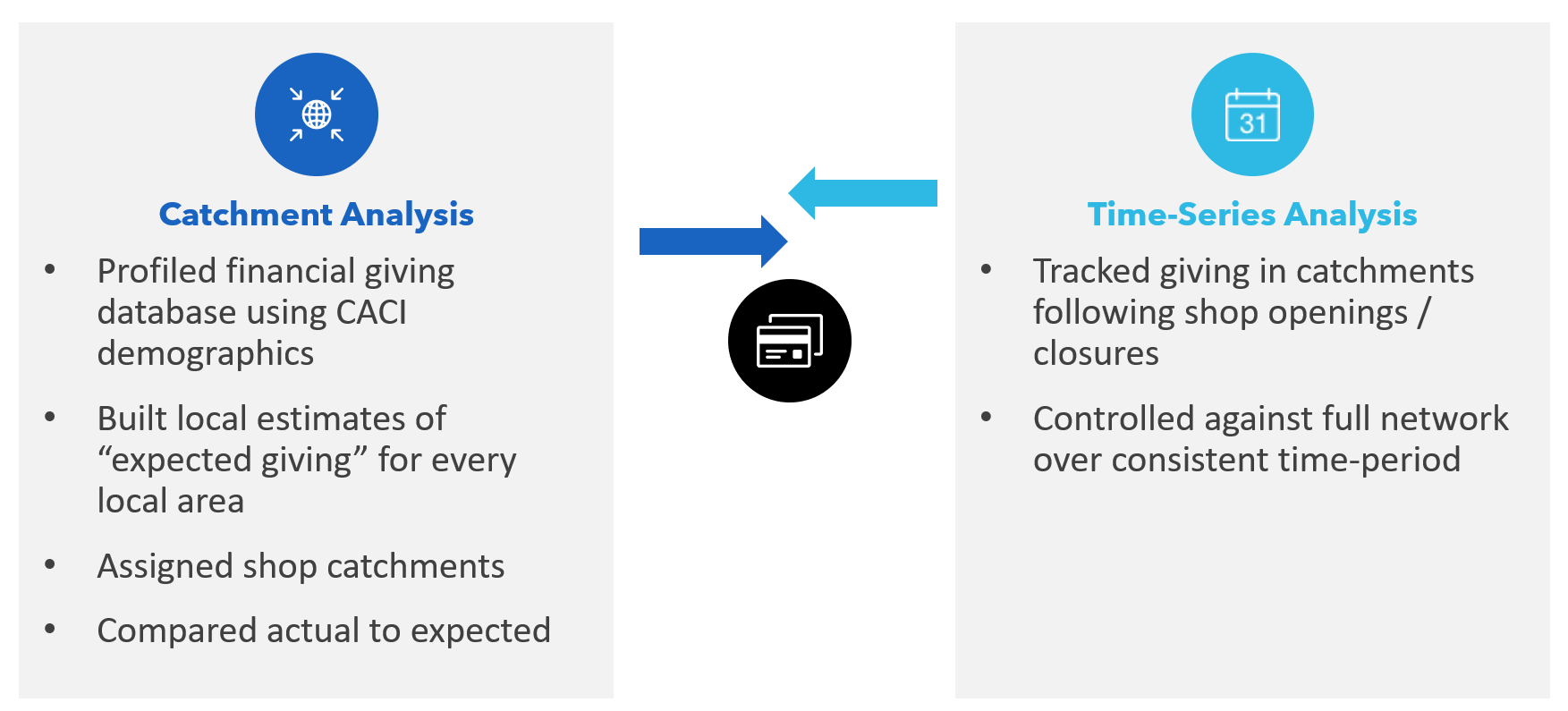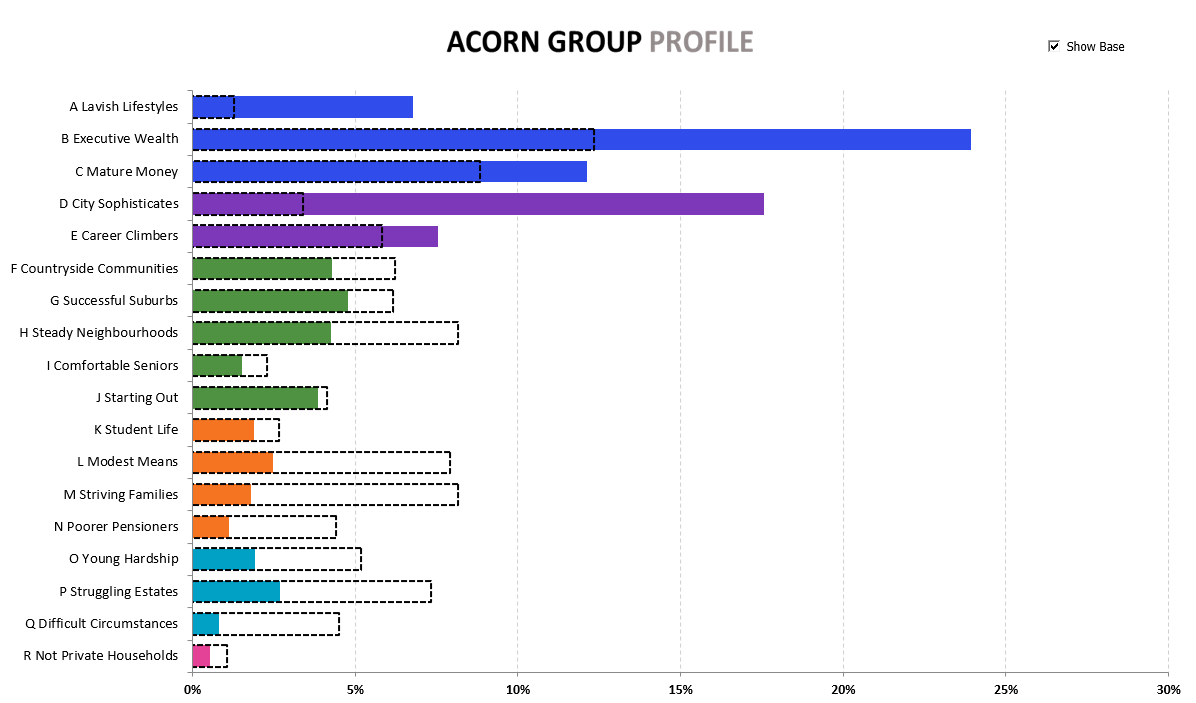Do charity shops add wider value to charities?
Charity stores are an established feature of almost every retail centre from local parade to retail parks. They offer a valuable income stream for charities and are an increasingly important occupier in a retail landscape facing further store closures by significant household names.
But do the stores bring charities more than just the money that comes through the tills?
- By having a physical presence on the high street are you also raising awareness of your charity?
- Does this convert into additional financial giving, volunteering or engagement with your cause?
- Do stores also provide assistance for local people that your wider charity mission is to support?
- Alongside serving the valuable role of selling affordable goods to vulnerable groups?
- Do local stores drive online sales through the increasingly important e-commerce channels that are being invested in by many charities?
- Or should we follow the trends to focus on online retail?
Cleary, if the answers to these questions is “yes”, it will help to support the business case for new store openings. But many charity retailers are struggling to answer these critical business questions beyond the point of anecdotes and hunches.
Wouldn’t it be good to be able to prove the wider value, and be able to quantify it in revenue terms?
Working with a major charity we’ve taken the first steps and recently presented the results at the Charity Retail Association’s annual conference.
IT’S A POSITIVE PICTURE FOR THE CHARITY RETAIL SPACE AS WE HAVE SEEN EVIDENCE OF A STRONG UPLIFT IN FINANCIAL DONATIONS IN THE CATCHMENTS OF THEIR STORES. THIS STARTS TO SUPPORT A KEY PART OF THE HYPOTHESIS THAT RETAIL STORES DO CONTRIBUTE ADDITIONAL FUNDRAISING.
Our methodology, outlined in Figure 1, built on an approach that we have already employed to demonstrate how physical stores drive online sales success for mainstream retailers. This widely shared report reveals that a typical retailer is likely to benefit significantly from an “online halo” around physical stores.
Figure 1 – Outline Approach to Demonstrating Charity Shop Giving Halo

Approach 1, the left side of Figure 1, used the charity’s anonymised online donation data to estimate the level of financial donations that we would expect to receive in any local area, based on their demographics and region.
Figure 2 shows a simplified summary of the variations in giving by our Acorn classification, which was then modelled to each local area.
Figure 2 – National Summary of Variations in Giving by Acorn Group

We then overlaid store catchments onto this “expected” local demand estimate and compared the “actual” income from the expectation. This brought exciting results. We witnessed a clear and quantifiable uplift in giving close to stores that was similar to the total profits of the store network. This is a serious upside from stores.
Such an upside would truly justify the role of the store, support new site business cases and lead to greater collaboration between retail, fundraising and volunteering teams to put the store at the heart of acquisition.
Unfortunately approach 2, the time-series analysis, was inconclusive. The challenge here being the data, with huge amounts of noise in the catchments of overlapping stores that meant a clean uplift in financial donations could not be seen.
This does not mean that the effect is not there, unfortunately we just can’t see it in their data yet. So, we accept that this lack of a second opinion does temper our confidence in the uplift findings whilst our hunt for the holy grail continues and the client develops their data strategy.
Whilst proving the wider value of stores may sound a simple task the challenge is missing or disconnected data sources.
MOST CHARITY STORE TRANSACTIONS ARE FACELESS – WHETHER THAT IS BUYING OR DONATING PRODUCTS. AND IF YOU SIGN-UP TO VOLUNTEER, CAMPAIGN, GIVE OR SHOP ONLINE FROM THE COMFORT OF YOUR OWN HOME THERE ARE RARELY CLEAR LINKS THAT PROVE THE ROLE THE STORE PLAYED IN THE ACQUISITION.
But links can be made to enable you to attribute the role of your stores in your transactions. Whether that is through catchment models, data enhancement, transforming your in-store data capture, improving your data holding or visualisation of data.
To discuss how CACI’s technology, data and consultancy can help you understand the true value of your stores, customers and supports please contact Paul Langston on 020 3892 2311.